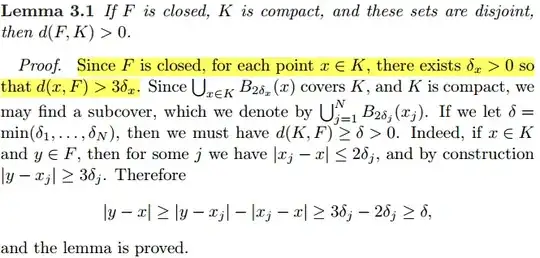I am not student in Mathematics.
The following proof comes from the book: Real Analysis, by Elias and Rami (p.18):
The folloing is my problem:
- It seems the yellow part implies the result (but it does not prove anything). What is the difference between the yellow part and the conclusion $d(K,F)\geq\delta>0$? (Hope to know the logic of this proof)
- If no the condition "$K$ is compact", just "$K$ is closed", then there may not exist $\delta_x>0$ such that $d(x,F)>3\delta_x$. Correct?
